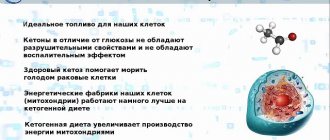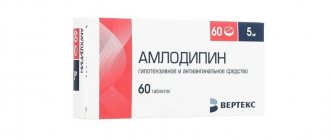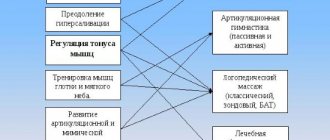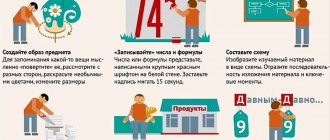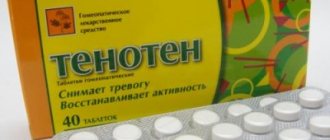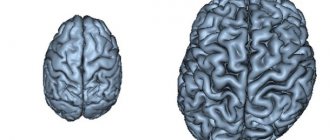According to medical statistics, the hyperkinetic form of cerebral palsy occurs in approximately 25% of cases.
This is a special form of cerebral palsy in which the child experiences involuntary muscle contractions called hyperkinesis.
Among the most characteristic signs of this pathology are lesions of the central nervous system, muscle tone disorders, and certain speech disorders.
What is cerebral palsy?
Cerebral palsy is a chronic disease. It combines a whole range of manifestations associated with motor dysfunction. Most often develops during intrauterine development of the fetus.
Cerebral palsy is non-progressive in nature. This means that the disease does not spread within the body, but specifically damages individual areas of the brain. As a result, it becomes difficult for the child to monitor the coordination of movements.
There are 3 stages of the pathological process:
- early;
- initial chronic-residual;
- final residual.
The first stage lasts about 4 months. It is characterized by: increased heart rate, periods of respiratory distress, nystagmus, and convulsive syndrome. Movement disorders are difficult to discern.
The next stage lasts from the fifth month of a child’s life to 4 years. During this period, persistent muscle hypertonicity arises. The late residual stage is characterized by the consolidation of motor disorders, the formation of contractures against the background of muscle atrophy.
Spastic diplegia
Characteristic features:
- muscles of the lower and upper extremities are toned;
- the lower extremities are more affected;
- hands are more active and coordinated.
Diplegia is a very common type of cerebral palsy, its symptoms to a certain extent appear in newborns. Intelligence is not affected, the child can be successfully trained.
Despite this, exceptions are still possible; there are individual cases where intellectual development is below normal. Minor deviations in mental or speech development may be observed.
Spastic diplegia occurs most often in premature babies, but the main cause is hemorrhage in the ventricles of the brain and liquefaction of nervous tissue. The part of the brain responsible for motor activity is affected.
Main reasons
Any type of pathology is a consequence of malnutrition of the brain of the fetus or newborn. The causes of hyperkinetic cerebral palsy are hidden in defects in the subcortical parts of the brain, more precisely, in the striopallidal system.
The following pathologies during pregnancy can lead to the disease:
- infectious lesion (syphilis, toxoplasmosis, etc.);
- fetoplacental insufficiency;
- prolonged toxicosis;
- Rhesus conflict;
- early placental abruption;
- diseases not related to pregnancy in the mother (diabetes, heart defects, hypothyroidism).
Directly during childbirth, cerebral palsy can be provoked by:
- long waterless period;
- birth injury;
- protracted/premature/rapid labor.
In the postpartum period, the cause of cerebral palsy may be asphyxia of the newborn due to suffocation by the umbilical cord or the entry of amniotic fluid into the lungs.

Hyperkinetic form of cerebral palsy (cerebral palsy) - causes, symptoms, treatment, prognosis
Cerebral palsy (CP) is a serious and unpredictable disease.
It can develop in the first trimester of pregnancy, or it can occur after childbirth, as a result of birth trauma or hypoxia. The hyperkinetic form of cerebral palsy (CP) occurs in 25% of cases. A feature of this form of cerebral palsy is a predominant violation of muscle tone with a slight impairment of the child’s mental development.
The hyperkinetic form of cerebral palsy differs from other forms by the presence of involuntary movements or hyperkinesis. Hyperkinesis can manifest itself in various parts of the body, but most often it affects the toes, hands, muscles of the face and neck.
- All information on the site is for informational purposes only and is NOT a guide to action!
- can give you an ACCURATE DIAGNOSIS !
- We kindly ask you NOT to self-medicate, but to make an appointment with a specialist !
- Health to you and your loved ones!
With this form of cerebral palsy, children do not develop bone defects and contractures (limitation of joint mobility), but children are prone to subluxation of small joints of the hands. Due to the lack of precise coordination, targeted grasping may be impaired, which makes such patients quite vulnerable in everyday life.
The prognosis for the hyperkinetic form of cerebral palsy depends on the severity of the disease, concomitant pathology, timeliness, adequacy and continuity of treatment and rehabilitation. Cerebral palsy is incurable, but with proper treatment and recovery it is possible to compensate developmental defects as much as possible.
In the absence of seizures, the disease has no tendency to develop. With mild and moderate forms, as well as adequate treatment and rehabilitation, children with the hyperkinetic form of cerebral palsy can move independently from the age of 5-6 years.
Despite the terrible diagnosis, with this form of cerebral palsy, the mental development of children suffers much less than their physical development. This allows children with mild and moderate forms of cerebral palsy to master the general educational program at school and receive secondary specialized and higher education.
Causes
Any form of cerebral palsy occurs due to malnutrition of the fetal or newborn brain. The hyperkinetic form occurs due to defects in the subcortical parts of the brain, namely the striopallidal system.
The following pregnancy pathologies can lead to the development of cerebral palsy in the fetus:
- infections (syphilis, papillomavirus infection, toxoplasmosis, etc.);
- fetoplacental insufficiency (fetal nutritional disorders, including hypoxia caused by defects in the mother’s placenta);
- severe and prolonged toxicosis;
- early placental abruption;
- Rhesus conflict;
- maternal diseases not related to pregnancy: heart defects, hypothyroidism, diabetes mellitus, etc.
During childbirth, a risk factor leading to or contributing to the development of cerebral palsy may be:
- long waterless period;
- prolonged, premature or rapid labor;
- birth injury.
In the postpartum period, the main risk factors for the occurrence of cerebral palsy are asphyxia of the newborn (suffocation due to the entry of amniotic fluid into the lungs or suffocation by the umbilical cord).
One of the central causes of damage to the subcortical parts of the brain is bilirubin encephalopathy, which occurs as a complication after jaundice in full-term and premature infants. This jaundice occurs when there is a Rh conflict between mother and fetus.
Careful and correct management of pregnancy, monitoring the vital signs of the mother and fetus, allowing timely identification of conditions dangerous to the fetus and preventing the occurrence of hypoxia, is the best prevention of cerebral palsy.
Equally important are the choice of the optimal method of delivery and competent management of labor and the postpartum period and monitoring the vital signs of the newborn.
Symptoms of the hyperkinetic form of cerebral palsy
Symptoms of hyperkinetic paralysis include:
- Variable muscle tone, muscle dystonia, intermittent spasms, hyperkinesis.
- Violent involuntary movements that occur during nervous excitement or excitement and are absent during sleep. The movements of such children are excessive, clumsy, and sweeping.
- Swallowing disorders and speech disorders. The speech of such children is slurred and slow; in 30-50% of cases, sensorineural hearing loss may develop.
- To a lesser extent, autonomic disorders and lability of the emotional system are manifested.
| Severe forms of hyperkinetic paralysis | They are expressed in involuntary movements already in the first months of life, however, in most young patients moderate hyperkinesis appears at the beginning of the second year of life and is of a descending nature: from the root of the tongue, the face of the neck to the torso and distal limbs. |
| Mild forms of paralysis | Manifested by quick, unexpected spasms of the upper half of the body. Severe forms of paralysis are characterized by slow, increasing hyperkinesis of the arms and legs. Rest and sleep help relieve spasms, and on the contrary, stress intensifies and increases hyperkinesis. |
Changes in muscle tone are characteristic in the first years of life of a child with a hyperkinetic form of cerebral palsy. In newborns with cerebral palsy syndrome, as a rule, muscle tone is reduced during the first month of life.
By the second month, dystonic attacks may appear with a sharp increase in muscle tone. Tendon reflexes may be normal or increased.
Speech disorders are manifested by delayed speech development, insufficient articulation and slow speech rate.
Recovery and rehabilitation
Cerebral palsy is an incurable pathology and absolute recovery cannot be achieved with it. With timely, comprehensive and continuous treatment and rehabilitation, it is possible to achieve compensation for neurological deficits, avoid or reduce skeletal deformities and contractures, including in the hyperkinetic form of cerebral palsy.
It should be remembered that until the age of 5, a child is actively developing his psyche and intellect and learning skills. Also, up to 4-5 years of age, motor disorders and contractures are formed and consolidated in all types of cerebral palsy. Therefore, treatment and rehabilitation measures in early childhood bring the greatest effect, and also allow you to instill in the child basic handling skills in everyday life.
Treatment of the hyperkinetic form of cerebral palsy is carried out taking into account the individual characteristics of the child’s disease. When drawing up a treatment program, the severity of brain damage, concomitant pathologies, the presence of seizures, epileptic seizures, etc. are taken into account.
Treatment of cerebral palsy involves not only drug therapy, but also medical rehabilitation, speech correction and psycho-pedagogical correction, restorative therapy and rehabilitation.
For drug therapy, a number of drugs are used aimed at:
- normalization of muscle tone, reduction of hyperkinesis;
- anticonvulsants;
- neurotrophic drugs and nootropics for correction of the nervous system and emotional background;
- means for increasing the metabolism of the nervous system;
- B vitamins.
Massage, physical therapy (physical therapy) and physiotherapy are of utmost importance in the treatment of muscle spasms. To correct defects in the muscular and skeletal skeleton, means are used that compensate for impairments in cerebral palsy: special shoes, crutches, strollers, etc.
More progressive methods of treating cerebral palsy include mechanotherapy, which uses various training devices and suits to develop the necessary motor pattern and reduce tension or provide muscle stretching.
Speech therapy and psycho-pedagogical correction consists of classes with a defectologist, psychologist, elimination of speech defects, and work with the patient’s family. Social adaptation of young patients with cerebral palsy is carried out, they are taught communication skills, the ability to learn and acquire a profession.
Animal therapy and rehabilitation through sports provide a good restorative effect. Animal therapy is treatment through communication with animals. Horses and dolphins are used for these purposes.
Read here how to provide first aid for epilepsy.
You will find a description of status epilepticus in another article.
Source: https://nerv.hvatit-bolet.ru/giperkineticheskaja-forma-dcp.html
Characteristic manifestations and disorders
The main symptom of the disorder is instability of muscle tone. It can be normal, decreased or increased. If spastic symptoms appear against the background of paralysis, the disease is diagnosed as a spastic-hyperkinetic form of cerebral palsy.
The usual movements of children with this diagnosis are disrupted: they look awkward and a little sweeping. It is this form that is characterized by the appearance of hyperkinesis - involuntary contraction of facial muscles, legs and arms.
There are several types of hyperkinesis:
- athetosis;
- chorea;
- choreoathetosis;
- torsion dystonia.
They can occur singly or in combination. Often, disorders of the musculoskeletal system are combined with hearing and speech disorders.
In children with the hyperkinetic form of cerebral palsy, joint deformation and contractures do not occur. However, subluxations can occur in the area of small joints of the upper limbs. Another characteristic sign is a violation of the grip of small objects. Difficulties also arise with other movements that require concentration.
There are different degrees of severity of the pathology. With the mild version, defects in the musculoskeletal system are almost invisible. Such children can attend general education institutions and cope without outside help. However, they may experience involuntary and sharp muscle spasms, spreading mainly in the upper torso area. Such symptoms intensify after stress and during depression.
For severe hyperkinetic forms of cerebral palsy, the following conditions are symptoms:
- involuntary muscle movements appear in the first months of life;
- in the second year of life, moderate hyperkinesis of a descending nature occurs;
- contractions of the muscles of the upper and lower extremities are of an increasing nature.
Children with moderate and severe pathology require constant comprehensive care.
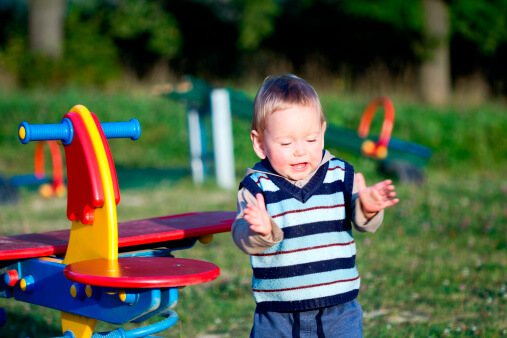
Studying at a regular school
Some schools accept children with similar problems. But there are many “buts” that need to be taken into account before the baby sits down at the desk with everyone else.
It all depends on several factors:
- physical and intellectual learning ability;
- permission from a doctor to attend an educational institution;
- minimal student aggression;
- the school's ability to accommodate a disabled child;
- availability of qualified teachers in the field of defectology.
Unfortunately, it does not often happen that all these factors are met and a student with cerebral palsy can attend a regular school. Most often, he is sent to home-based training, external studies. It is also very important to choose a special program and approach to the baby. The usual situation: a class of 20-30 people, one teacher - it is impossible to pay attention to everyone. And a child with such a disease needs the constant participation and help of a teacher.
In addition, he cannot always move around on his own, climb stairs, or go to the toilet. His mother or nurse should be with him. This also makes attending a regular school very difficult. Here, non-acceptance by the team comes into the background, but it is no less important. Your baby, like anyone else, wants to have friends and normal relationships. Due to the problems and physical manifestations of the disease, he may be the object of ridicule and even bullying. Parents should take this into account, even if they have the opportunity to attend school and have a normal level of intelligence.
Methods of correction and restoration
It is not possible to completely overcome the disease. However, there are various techniques through which it is possible to correct the child’s behavior and movements. They are selected by the attending physician, taking into account the characteristics of the hyperkinetic form of cerebral palsy and the individual characteristics of the little patient.
To ensure the most effective therapy, it is recommended to use an integrated approach. It involves the use of the following techniques:
- medical rehabilitation;
- drug treatment;
- speech correction;
- restorative procedures;
- help from teachers.
Each method will be discussed in detail later in the article.

Hyperkinetic type of disease
The hyperkinetic form (dyskinetic form) of cerebral palsy has the following symptoms:
- involuntary movements of the limbs;
- incorrect positioning of the legs;
- violations of the correct posture of the spine;
- slow movements;
- convulsions;
- speech disorder.
Article on the topic: Prevention of hypertension - goals, objectives and types, recommendations for lifestyle and nutrition
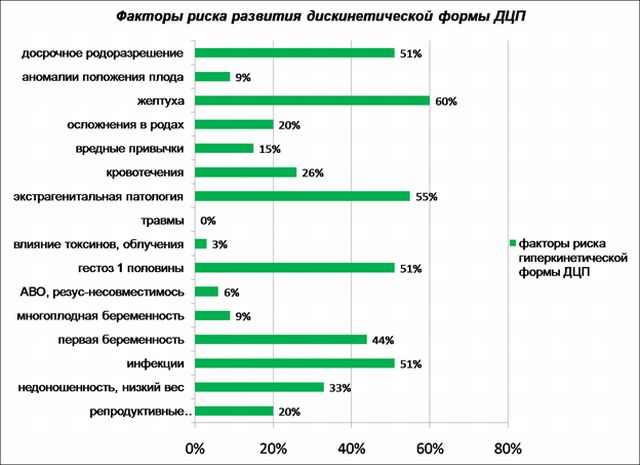
This type of cerebral palsy has a slight effect on the child’s intelligence, so the child can study quite successfully at school, have quite normal contact with others, and successfully adapt to society.
The cause is hemolytic disease complicated by kernicterus. Subcortical structures are affected.
Drug therapy
It is recommended to start rehabilitation from an early age. It is better to start treating the hyperkinetic form of cerebral palsy at the age of 4-5 years. At this time, motor disturbances characteristic of the pathology are minimal.
Drug therapy includes taking muscle relaxants to eliminate muscle spasms and anticonvulsants to relieve the severity of symptoms. To correct the emotional background of the child and the functioning of the central nervous system, the help of neurotrophic medications is required.
Through properly prescribed drug therapy, it is possible to normalize muscle tone and reduce hyperkinesis. To speed up the recovery period and improve the effects of drugs, it is additionally recommended to take B vitamins.

Other treatments
For various disorders against the background of the hyperkinetic form of cerebral palsy, the use of means that provide their compensation is recommended. We are talking about strollers, uprights, crutches, and special shoes. At later stages, progressive methods are used, involving the introduction of suits and training apparatus. With their help, it is possible to compensate for stress and develop motor skills.
If necessary, speech therapy and psycho-pedagogical correction is prescribed. The work of a speech pathologist is usually aimed at reducing the severity of speech defects. The psychologist collaborates not only with the child, but also with his parents to ensure the most comfortable environment in the family. The child is taught to communicate with peers.
Massage is widely used for cerebral palsy. The procedures help improve blood circulation and metabolism. To obtain maximum effectiveness, sessions should be carried out by a qualified specialist.
Physical therapy is also useful for children with cerebral palsy. Exercises are selected individually. Almost all young patients are recommended to swim. Physiotherapeutic procedures have a good effect.
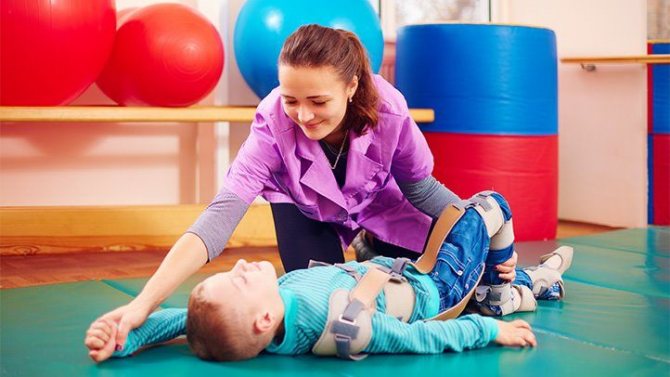
Home schooling
This type of training is preferable. There is a familiar atmosphere here, there are opportunities for relaxation, breaks for sleep and food. The school definitely cannot offer this. On the other hand, there must be someone who is constantly with the child and supervises the activities. Teachers will come to the student. Here he is deprived of the function of communicating with other children, which is not very good: he will not have full social experience, like other children. Such children develop worse speech, and their behavior becomes even more unstable. Parents and teachers make concessions to him and often indulge his desires - this has a negative impact on personal development.
Education is not all that children with cerebral palsy need. You will need the supervision of a doctor, and sometimes the presence of a nurse. Massages and a swimming pool are very helpful in relieving stress and pain from muscle tension. They will also have to be visited regularly. This is also an opportunity to develop your child according to an individual program.
Of course, a child or teenager feels comfortable at home, they are surrounded by the care of their parents. If upbringing is done correctly, children can be quite gentle and understanding. The better the intellect is preserved, the easier it is to cultivate normal moral qualities. The main thing for adults to remember is that their child will not always remain small. We need to prepare him for adult life as much as possible.
Features of hippotherapy for cerebral palsy
The listed therapeutic measures help reduce muscle hypertension, but they are not capable of teaching the child new skills. Therefore, today hippotherapy is widely used in the treatment of synkinesias in the hyperkinetic form of cerebral palsy.
Contact between a child and a horse stimulates the functioning of his subcortical areas of the brain, allows him to learn complex movements and improve speech skills. During exercise, muscle hypertonicity and the severity of hyperkinesis decrease.
While riding, the rider begins to involuntarily repeat all the movements of the horse, learns to maintain balance and work with both legs at the same time. In addition, the habit of falling on the affected side disappears, and fine motor skills develop. In just a few sessions, emotional tension normalizes against the background of a feeling of inferiority in society.
Even long sessions of hippotherapy practically do not bother children. Each time they gain new skills, experience and impressions. Fresh air has a beneficial effect on the condition of the whole body.
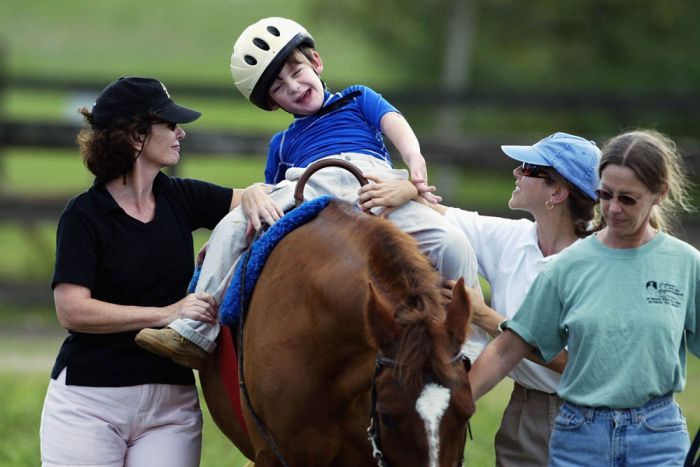
Why a regular school is not always suitable
Traditional public school is most often not suitable for children with disabilities, and here are the main reasons:
- the infrastructure of the school grounds and classrooms may not be suitable, for example, there are often no ramps and elevators;
- the pace of study brings discomfort and takes a lot of energy, for example, in high school the daily schedule consists of 7-8 lessons;
- The format of a public school does not allow a child to be productive - the requirements of the program do not correlate with the student’s capabilities, and children with disabilities may find it more difficult to write by hand, keep up with the teacher’s speaking speed, or focus on one task for a long time.
Distance learning for children with disabilities can solve these problems, as it makes the educational process more individualized. An online school can adapt to the needs of a child with a disability and provide the most comfortable conditions for classes.
Prognosis for recovery
The prognosis for the hyperkinetic form of cerebral palsy is largely determined by the severity of the pathology, the presence of concomitant health problems, and adequate and timely treatment. The disease cannot be completely overcome. However, with a competent approach and rehabilitation, developmental defects can be compensated as much as possible.
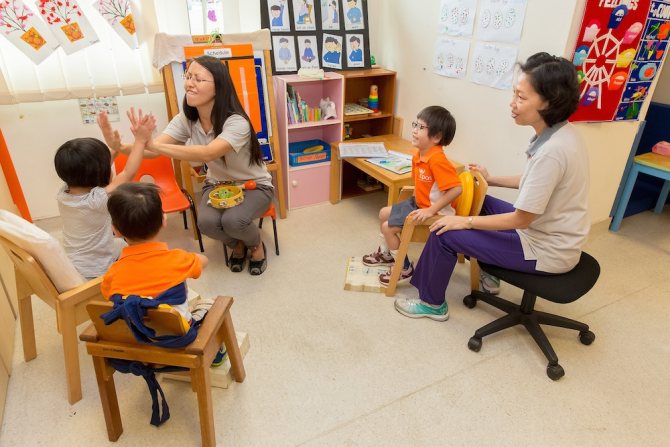
In the absence of seizures, the disease practically does not progress. Children can move independently from the age of 5-6 years with a mild or moderate severity of the hyperkinetic form of cerebral palsy. Their mental development suffers less than physical development. Therefore, in most cases, they master the school curriculum and receive secondary or higher education.
The nature of children's behavior
In cases of mental development disorders associated with cerebral palsy, the following features in the behavior of children are observed:
- the child is guided mainly by emotions associated with pleasure;
- Children with cerebral palsy are characterized by egocentricity;
- they cannot work purposefully in a team;
- they do not know how to correlate their own interests with the interests of the people around them;
- there are elements of infantility in behavior;
- even at high school age, such children have an increased interest in games;
- they are extremely suggestible, incapable of volitional efforts on themselves;
- behavior is also characterized by instability of emotions, disinhibition;
- children tend to get tired quickly;
- they have difficulty adapting to new conditions, they have various fears - most often fear of heights, darkness, etc.;
- children are very sensitive to the mood and behavior of others, which is reflected in increased impressionability: incidents that are neutral for other children can cause a violent reaction in them.
- Sleep disturbances, nightmares, and nighttime anxiety are common.
